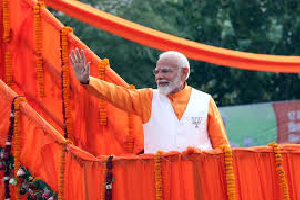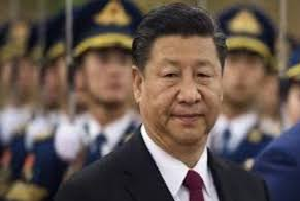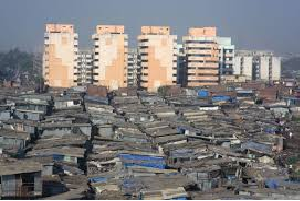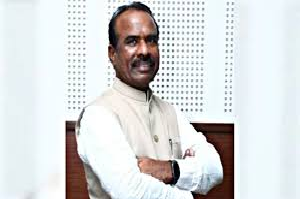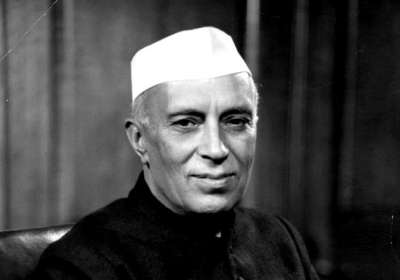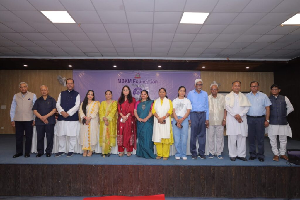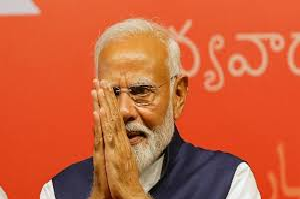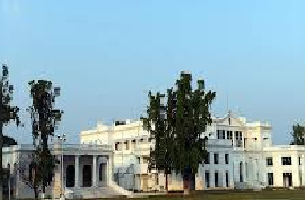25

Today's Edition
New Delhi, 25 January 2024
Shivaji Sarkar
Will Ram Mandir rejuvenate the holy city of Ayodhya of three lakh people by making it an investment hub of Rs 85,000 crore? Now after a grand ceremony, the huge Ramlala temple worth Rs 1800 crore has been opened for the devotees from all over the country and abroad i.
The small city of five square km is seeing a flurry of activities to welcome an estimated 45 lakh visitors. Ayodhya Commissioner says that there will be an investment of Rs 85000 crore in the next ten years . This is largely a guess. The dream of turning it into a hub is based on 178 projects and a series of hotels of different levels. Many new 5-star hotels ranging from 1000 beds to Oyo's will open.
In contrast, 66 km from Ayodhya, is the Jagdishpur industrial hub, which efforts were made to develop in the 1980s by Sanjay Gandhi and then Rajiv Gandhi with public sector investments worth thousands of crores of rupees. The latest of these was a plan in 2012 to build a food hub. All this collapsed due to being located in a backward area and largely due to unsustainable business models and unfavorable political environment.
Ayodhya is seeing construction of roads, bridges, new railway station, airport, water metro service and other similar facilities and cultural centre.
The redevelopment of Ayodhya, as envisaged in the Master Plan 2031, hinges broadly on eight themes for the upcoming smart city. The plan includes a spiritual university, a green-field township, an urban forest, etc. Other main attractions include a central business district, hotels, river banks, water bodies and dharamshalas. Till now the movement of around 30000 people per month is reported.
According to industry sources, property prices have increased almost four times in the last three years. Top five-star hotel brands like Taj, Radisson, ITC are opening new properties to meet the projected increase in demand. Actually, more than 73 new hotels are in the pipeline in Ayodhya. A new property, Ayodhya Tent City, has also arrived and offers luxurious tented accommodation.
Indian Hotels (IHCL) launched two new hotels in Ayodhya under the Vivanta and Ginger brands. Both are greenfield projects in partnership with Bhardwaj Global Infraventure. “Ayodhya is an important pilgrimage site and is expected to attract a large number of devotees throughout the year. These hotels will also complete the travel circuit with Lucknow and Varanasi”, IHCL said in a statement.
Interestingly, civic officials are estimating the ratio of residents to tourists at 1:10. According to industry estimates, around 3.25 lakh tourists visited Ayodhya in 2021 and the number increased to 2.39 crore the following year. Now, after the inauguration of the temple, local authorities are expecting more than 4 crore pilgrims to visit Ayodhya this year; Transforming the city into a huge tourist destination and global spiritual centre.
The state government has promised that the holy city will become a world-class city in the coming years as it plans to set up modern facilities while maintaining the cultural beauty.
There are 324 five star hotels in the country. There are said to be a dozen in Agra, but they are rarely full because most people live in Delhi and go in the morning and return in the evening. There are no 5 star accommodations in the popular pilgrimage destination Vrindavan. 126 hospitality sector projects worth Rs 3,800 crore will be launched at the Bhoomi Pujan ceremony in Ayodhya to be held in February. It includes four mega projects including hotels and resorts. The largest investment in the district is in the hospitality sector, which totals Rs 420 crore. MoUs worth Rs 1,923 crore have been signed on 46 out of 126 projects
Ayodhya has been one of the least priority places for most devotees. Government investment is low and no industrial activity is planned yet. Only the flow of tourists or residents in the ratio of 1:10 will sustain the economy.
The political environment plays a big role in sustaining a project. Programs started with great fanfare are not successful. The Jagdishpur area was planned to be an industrial hub and public sector companies were forced to set up factories in the area despite concerns of feasibility and profitability. Many big PSUs like SAIL, HAL, BHEL and thousands of small companies had units in this area due to political compulsions.
We invested money to set up the factory but in less than a decade the decline started as almost all the 135 units went into loss. Even SAIL and Rourkela Steel's Rs 1,500 crore mega plant Malvika Steel collapsed despite financial support from the central government from 2012 to 2014.
Similarly, Amethi, 100 km away from Ayodhya, faced "vendetta politics" according to Congressmen and BJP minister Smriti Irani, saying the UPA government had pushed ahead with unviable projects. The fate of many projects pushed forward by UPA 2 in its final months now hangs in balance.
The business of small traders is booming in Ayodhya. The demand for handicrafts like decorative pendants, bangles, lockets, key rings, rosaries is increasing. According to the report, exports from Ayodhya increased by 130 percent to Rs 254 crore in 2023.
There is not much public investment in Ayodhya. It is designed to survive largely on private investment. Indian Industries Association vice-president Dinesh Goyal told the press that he expects a business of Rs 50,000 crore due to the ongoing preparations ahead of the inauguration ceremony of Ram Temple. Business organizations across the country are taking advantage of these opportunities. Whether this is a tall order will be revealed by developments in the region beyond the temple's reputation. But it may or may not come from Ayodhya place, the political earthquake of the country can come from here (Words 975)
---------------








